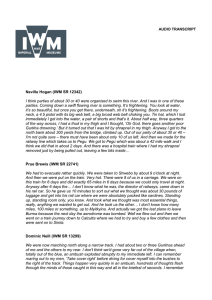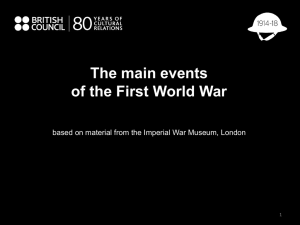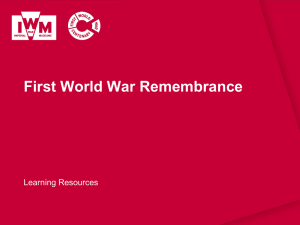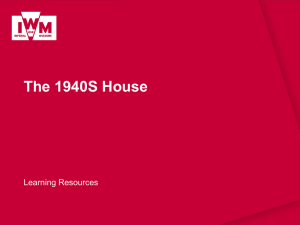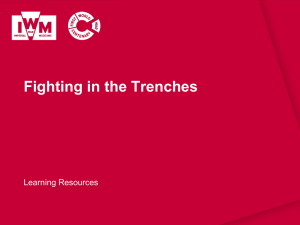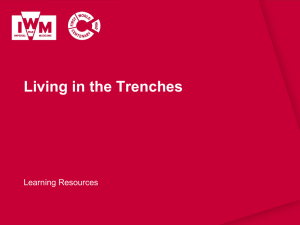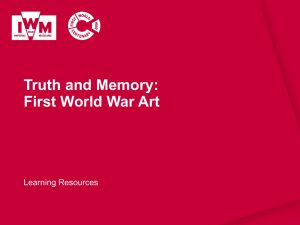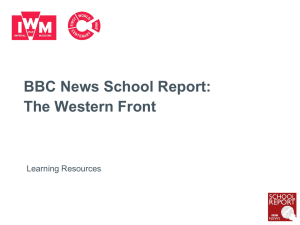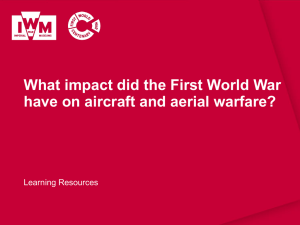Recruitment and Conscription
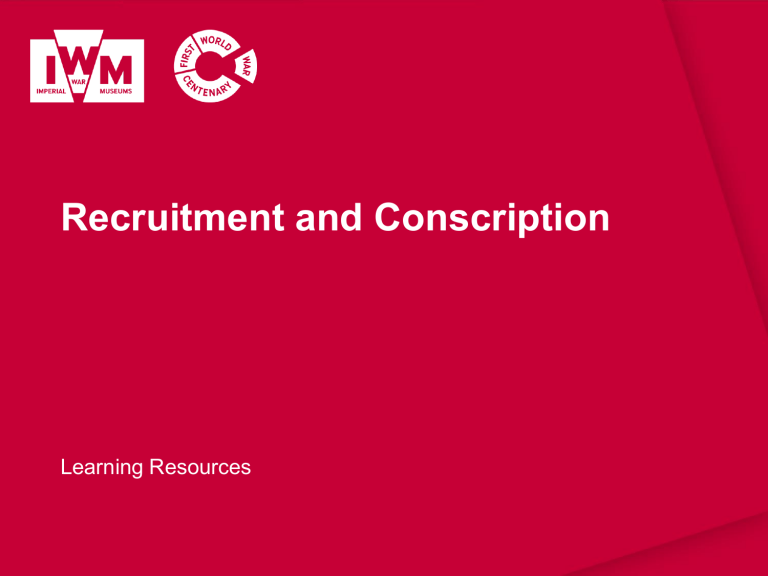
Recruitment and Conscription
Learning Resources
IWM Learning Resources: Terms of Use
• The images in this resource can be freely used for non-commercial use in your classroom subject to the terms of the IWM’s Non Commercial Licence: http://www.iwm.org.uk/corporate/privacy-copyright/licence
• You can use the full presentation or use individual slides within other presentations for use within school and to share with other teachers for their non commercial use as well.
• You can print the images out up to A4 size if you wish to use hard copies with your class.
• Each image comes with an attribution statement, which must be included wherever the image is used. For example, © IWM (Art.IWM ART 1179).
• Every effort has been made to contact all copyright holders. IWM will be glad to make good any error or omissions brought to their attention.
• By downloading this PowerPoint and using these images you agree to these terms of use, including your use of the attribution statement specified for each object by IWM.
© IWM (Q 42033)
British response to the outbreak of war, August 1914
The First World War began in August 1914. No one knew what kind of war it was going to be or how long it would last, but men rushed to join up and go to war. This photograph shows recruits at the Whitehall Recruiting Office in London.
© IWM (Q 66196)
A dismounted cavalry draft of the 1st Life Guards
In Britain over one million men had volunteered to fight by December 1914. By the end of the war more than four years later, almost one quarter of the total male population had served in the armed forces.
© IWM (INS 7637)
Leeds Pals – Shoulder Badge
Many men were encouraged to sign up with their friends and colleagues with the promise that those who ‘joined together should serve together’. This led to what was known as ‘Pals’ battalions.
© IWM (FIR 11580)
Dummy rifle
The sudden increase in the number of soldiers meant that, at first, their were serious shortages of uniforms, weapons, and equipment. This dummy rifle is cut from wood and was used by the British Army for training purposes.
© The rightsholder
Lieutenant Alan Lloyd
Alan Lloyd was born into a middle-class Quaker family in Birmingham in 1889. In January 1914 he became engaged to Dorothy Hewetson. When war broke out, Lloyd immediately volunteered. On his honeymoon in
August he learned that he had been commissioned as a Second Lieutenant into the Royal Artillery.
© The rightsholder
A letter written by Alan Lloyd to his fiancée
This letter was written by Alan Lloyd on 06 August 1914. It explains his reasons for enlisting.
© The rightsholder
A letter written by Alan Lloyd to his fiancée
This letter was written by Alan Lloyd on 06 August 1914. It explains his reasons for enlisting.
© The rightsholder
Grave Marker
On 4 August Alan Lloyd was hit by a shell, whilst serving on the Somme. His body was taken back to Bécordel-
Bécourt, where he was buried on 5 August. Gunner John Manning was with Lloyd when he was killed. Some weeks after his burial, he placed this sign on Lloyd’s grave.
© IWM (Q 24777)
Men of the 45th Sikhs (52nd Infantry Brigade, 17th Division)
Men in the Dominions and Empire also volunteered. In Australia over 415 thousand men enlisted and over a million men of the Indian Army served overseas during the war. Over one hundred thousand New Zealanders, 425 thousand Canadians and
Newfoundlanders, and 230 thousand South Africans also served overseas.
© IWM (INS 7764)
Derby Scheme armband
As the war went on the British Government had to persuade more and more men to go to war. The Derby scheme was introduced in Britain in October 1915 and asked men to register their commitment to serve. Under the scheme single men would be called up before married volunteers.
© IWM (Q 23586)
Young British Recruits
Recruiting Officers were paid for each man so some turned a blind eye to underage volunteers. The
British government had originally said that no one under 19 years of age would be sent overseas to fight. In April 1918 they lowered the age to 18 after suffering a near-defeat on the Western Front. This photograph was taken in July 1918, when the army were trying to find and remove underage soldiers.
© IWM (Q 30069)
New recruits have their kit fitted following enlistment
In Britain and the Dominions the issue of conscription (forced military service) caused much controversy. Conscription was finally introduced in Britain and New Zealand in ,
1916, and in Canada in 1917, although it was not introduced in Australia.
© IWM (Documents.163)
Conscientious objectors
Conscription was a hugely controversial step. Conscientious objector’s refused to fight on religious or moral grounds, although the proportion of conscientious objectors to men in uniform was very small. This membership card for the No-Conscription Fellowship belonged to William Harrison, who went to prison because he refused to have anything to do with the war. He was a pacifist whose deep religious beliefs told him that killing was wrong.
© IWM (Q 42033)
Women at work during the First World War
The First World War substantially increased the numbers of women in paid work and the range of jobs that they undertook. The majority of women supported the war effort by working in industry.
© IWM (Art.IWM ART 1179)
The Women's Land Army and German Prisoners by Randolph Schwabe
Women took on jobs that had previously been done by husbands, brothers and fathers, who were now absent, as well as keeping households and families together.
This painting shows two women of the Women's Land Army and two German prisoners-of-war doing important agricultural work.
© IWM (Art.IWM PST 4881)
Women Wanted Urgently
A number of the leading Suffragettes played an important role in setting up women-only organisations to support the war effort. Their success influenced the decision to create branches of the armed services for women. The first of these was the Women’s Army Auxiliary Corps (WAACs), which was formed in January 1917.
